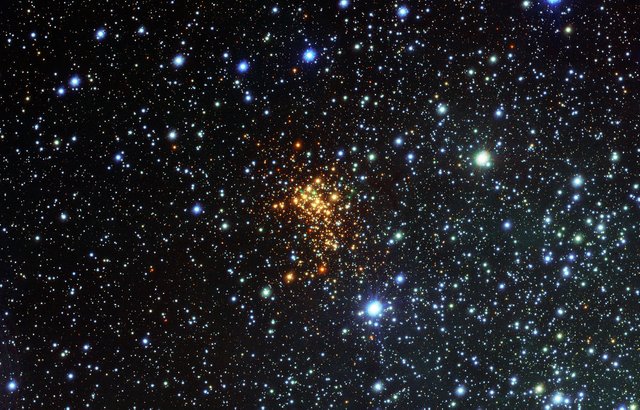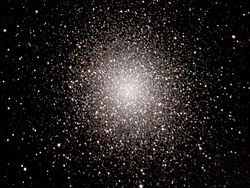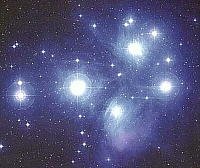Greetings and huge hug to all of you my faithful readers, I hope you are in the mood to learn a little about astronomy today. I want to talk about stellar clusters, training and how they help us better understand the universe. Enjoy it:
What is a cluster of stars?
 Source
For the definition is very simple, a group of stars attracted and together among themselves due to its gravity. Huge star formations created from the same cloud of dust millions of years ago, the stars in them may be thousands, millions or hundreds of years old.
The star clusters do not usually have a large size (astronomically speaking) but it has a few hundred light years in diameter.
Source
For the definition is very simple, a group of stars attracted and together among themselves due to its gravity. Huge star formations created from the same cloud of dust millions of years ago, the stars in them may be thousands, millions or hundreds of years old.
The star clusters do not usually have a large size (astronomically speaking) but it has a few hundred light years in diameter.
Types:
Star clusters can be of two types, this depending on their age, number of stars, etc. The stars that make up a cluster are usually all formed in a range of one hundred million years, so they all have very similar ages.
Globular star cluster: These are composed of thousands or millions of stars and are older than a billion years, their concentration of stars in the center can be 100,000 times greater than in the region of space occupied by us. Globular clusters like Omega Centauri and 47 Tucanae (The two brightest ones) are possible to observe from the earth but, mainly, clusters of this type make us believe that what we see is a fusion of stars in a single.
The globular clusters possess several of the oldest stars of our galaxy (Milky Way), we speak of about 10,000 million years which is twice the age of our sun. They have greater metallicity than open clusters.
Open star cluster: Generally formed by hundreds or thousands of stars only, all of young age. These are more prone to explosions in their stars due to their lower density compared to globular clusters which makes them more susceptible to the movement of a star explosion, not to mention the clouds of dust that collapse in them. Two of the best known open clusters are the Pleiades and the Hiadas, they are found in the constellation Taurus and can be observed with the naked eye.
These clusters are formed from clouds of gas and dust in the arms of some spiral galaxy, the densest areas contracting leaving individual stars around them. They have less metallicity than globular clusters.
How they die and where they are?
Like everything in life, nothing is forever; the star clusters, like the stars, the animals, we, have their end. Open clusters tend to be the most likely to lose their stars more frequently due to their low density although on the other hand, open clusters also abound much more in the universe.
Globular clusters are found around galaxies, have spherical or almost spherical shape due to their high gravity and concentration of stars, this is what makes them denser than open clusters which are not found outside but within the galaxies, mostly in the spiral arms of these and without any definite shape.
In our galaxy (Milky Way) there are about 1,000 open star clusters, globular clusters only 140 exist. This is because open clusters abound much more in the universe than globular clusters (as I mentioned before).
Some star clusters:
This is the star cluster called R136 or RMC136 doradus, supercluster of stars formed in the nebula of the tarantula 170,000 light years from us.

Source
The NG 3532 is a bright open cluster located about 1,300 light years from Earth, located in the constellation Carina.
 Source
Source
Super star cluster (SSC):
In addition to common star clusters, sometimes we can find stellar superclusters in the universe, called SSC for its acronym in English. These superclusters are believed to be common globular clusters of very young age which possess in them a large number of massive stars and which are constantly ionizing a region region H II (Cloud of gas and bright plasma that can reach a size of several hundred of light years, in this they usually form massive stars, these stars emit extreme ultraviolet light that ionize the nebula around them).
Two unique and important features to mention about stellar superclusters is their high pressure 

 -
- K cm
K cm  and its high electron density
and its high electron density  -
- cm
cm .
It is believed that these natural phenomena can become globular clusters as mentioned above, provided they have enough low mass stars and do not end up being destroyed by gravitational interactions. This is a process that, if possible, will occur within several thousand years.
.
It is believed that these natural phenomena can become globular clusters as mentioned above, provided they have enough low mass stars and do not end up being destroyed by gravitational interactions. This is a process that, if possible, will occur within several thousand years.
Westerlund 1, the only supercluster of stars known in our galaxy:
 Source
Source
The star clusters help us to have a greater knowledge and understanding about the universe and the stars in general due to its large number of stars, all as old as their nearby neighbors.
Curious date:
The superclusters usually have many more years of life than the open and globular clusters.
That was all for today, thanks for reading and if you want to give me your vote and follow me in @rcrdoo for this and more types of content, I hope you liked it, greetings and I wish you a successful life...








 -
- K cm
K cm  and its high electron density
and its high electron density  -
- cm
cm .
.

Congratulations! This post has been upvoted from the communal account, @minnowsupport, by rcrdoo from the Minnow Support Project. It's a witness project run by aggroed, ausbitbank, teamsteem, someguy123, neoxian, followbtcnews, and netuoso. The goal is to help Steemit grow by supporting Minnows. Please find us at the Peace, Abundance, and Liberty Network (PALnet) Discord Channel. It's a completely public and open space to all members of the Steemit community who voluntarily choose to be there.
If you would like to delegate to the Minnow Support Project you can do so by clicking on the following links: 50SP, 100SP, 250SP, 500SP, 1000SP, 5000SP.
Be sure to leave at least 50SP undelegated on your account.
Excellent topic very interesting, every day we learn something new and really this is one of the things that I love to learn, really congratulations, I loved it was a very good post